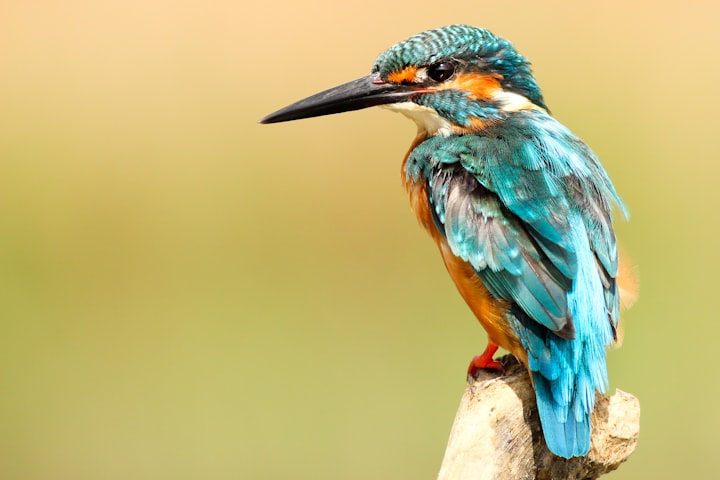"Amazon: the Biggest Forest of The World"
Exploring the Amazon: Nature's Grand Masterpiece

Often called the "lungs of the Earth," the Amazon Rainforest is the world's largest and most biodiverse tropical rainforest. With its unsurpassed beauty, ecological significance, and rich cultural tapestry, the Amazon, a natural marvel spanning an enormous region of over 6.7 million square kilometers across South America, captivates people all over the world. We will explore the amazing biodiversity of the Amazon, its critical role in world ecosystems, and the urgent need for conservation efforts to preserve this remarkable forest in this article.
The Green Heart of Earth
Nestled within the basin of the Amazon River, the Amazon Rainforest is a sprawling expanse of lush greenery, representing over half of the world's remaining rainforests. Its sheer size is awe-inspiring, and the diverse ecosystems contained within its borders contribute to its status as a global ecological treasure.
Biodiversity Beyond Compare
The Amazon Rainforest is home to an estimated 390 billion individual trees representing around 16,000 different species. This unparalleled biodiversity extends to its fauna, boasting a staggering array of wildlife, including jaguars, tapirs, macaws, and an astounding variety of insects. The forest is a living testament to the intricate interconnectedness of species, each playing a unique role in the delicate balance of the ecosystem.
The Amazon River: Lifeblood of the Forest
At the heart of the Amazon lies the mighty Amazon River, the second-longest river in the world. This colossal waterway and its intricate network of tributaries serve as vital conduits, shaping the landscape and sustaining the diverse life within the rainforest. The river is a lifeline for countless species, providing both habitat and sustenance.
Indigenous Cultures and Wisdom
Beyond its ecological importance, the Amazon is also home to numerous indigenous communities, each with its distinct cultures, languages, and traditions. These communities have lived in harmony with the rainforest for generations, relying on its resources while maintaining a profound respect for its delicate balance. Their intimate knowledge of the forest's plants and animals has proven invaluable for both scientific research and sustainable practices.
Challenges to the Amazon
Despite its significance, the Amazon Rainforest faces an array of threats, including deforestation, illegal logging, and climate change. The clearing of land for agriculture, cattle ranching, and infrastructure development poses a direct threat to the delicate equilibrium of this ancient forest. The consequences of such activities ripple far beyond the Amazon's borders, affecting global weather patterns and biodiversity.
Conservation Imperative
Recognizing the urgent need to preserve the Amazon, conservation efforts have gained momentum. International organizations, governments, and local communities are working together to establish protected areas, promote sustainable practices, and combat illegal activities. The importance of these efforts extends beyond national borders, as the Amazon plays a crucial role in regulating the Earth's climate and maintaining the health of our planet.
The Amazon in Peril: Global Ramifications
The health of the Amazon Rainforest is intrinsically linked to the health of the entire planet. Its vast expanse acts as a carbon sink, absorbing and storing large amounts of carbon dioxide. The destruction of the Amazon not only releases stored carbon into the atmosphere but also diminishes the forest's capacity to absorb future emissions, exacerbating the global climate crisis.
Tourism as a Force for Conservation
Responsible tourism has the potential to contribute positively to the conservation of the Amazon. Visitors who appreciate the rainforest's beauty and understand its ecological importance can become ambassadors for its preservation. Sustainable tourism practices, such as eco-friendly lodges and guided tours led by local communities, can generate income for conservation efforts while raising awareness about the challenges the Amazon faces.
Conclusion
The Amazon Rainforest stands as a testament to the wonders of the natural world, with its vibrant ecosystems, diverse wildlife, and cultural richness. As the largest forest on Earth, the Amazon plays a critical role in maintaining the balance of our planet's climate and biodiversity. The challenges it faces underscore the need for collective global action to ensure its survival.
As stewards of this magnificent green jewel, it is our responsibility to appreciate, protect, and preserve the Amazon Rainforest. By understanding its value and supporting conservation efforts, we can contribute to safeguarding this extraordinary ecosystem for future generations. The Amazon's fate is undeniably intertwined with our own, emphasizing the importance of a harmonious relationship between humanity and the natural world.





Comments (1)
The call to action for conservation is powerfully conveyed, making readers reflect on the critical role the Amazon plays in maintaining the health of our planet. keep going up